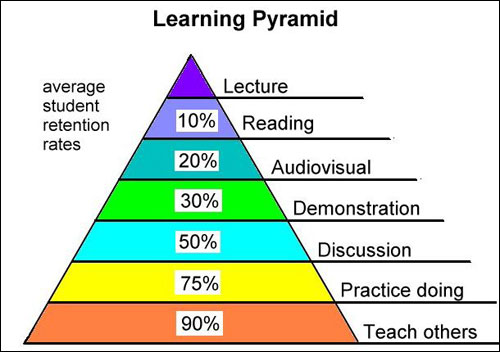Dec 27, 2010There is a growing consensus that radio frequency identification will one day have a dramatic impact on global industry and commerce. In fact, the technology is already beginning to have an impact—reducing costs and greenhouse gas emissions by driving operational efficiencies—for those organizations adopting it. Overall adoption, however, is occurring slowly. At RFID Revolution, we are convinced that one of the main reasons for this slow growth is the generally low level of RFID knowledge among end-user organizations, and even among many solution providers.
As a provider of Web-based RFID education, our company has interviewed dozens of end-user organizations over the past few years regarding how they learn about RFID as part of their project-planning process. In so doing, we have found a remarkable degree of consistency. Most of these organizations start with a small project, assigned to a cross-disciplinary team. In most cases, few—if any—of the team members or other stakeholders obtained a working knowledge of RFID before planning their project. What was missing was a broad understanding of the different types of hardware, middleware and standards, the typical applications in various environments, how to measure an application's contribution to an enterprise, including identifying key performance metrics, and how to systematically plan and implement a pilot.
This deficit of foundational knowledge can have numerous negative consequences:
• People are ill-prepared to identify the tremendous variety of potential RFID applications within their enterprise.
• Project teams fail to reach a timely consensus about how best to employ the technology within the organization.
• Project leaders fail to secure management approval to fund projects.
• Organizations occasionally select the wrong technology for a particular application, as well as the wrong vendor.
Unable to achieve success and a return on investment from their company's RFID project, the team may decide to abandon it altogether, or may remain stuck in the weeds. Meanwhile, other potential applications go unrecognized.
Most end-user organizations do not invest in formal RFID training for project team members or other stakeholders. Here is what typically happens:
1. A vendor "trains" the project team leaders.
The project leaders call an RFID technology or services vendor that they think may be able to address a particular application they have in mind. The vendor explains just enough RFID basics to enable the project leaders to grasp the product that company sells. The last thing the vendor wants to do is suggest that the project team's leaders and members should step back and take time to familiarize themselves with the spectrum of RFID technology available, think through alternative applications and tradeoffs, and examine architecture choices for the application at hand, before moving ahead. That would prolong the vendor's sales cycle, and also create awareness of a myriad of possibilities unfavorable to the vendor.
Even if sales representatives and their support personnel wanted to provide more extensive training, many are ill-equipped to do so. They have an information technology background, and have received training on their RFID product, but have not been given comprehensive training on RFID technology, and how to apply and evaluate it.
So, the project leaders do not obtain the RFID foundational knowledge necessary to think broadly about how their organization can apply RFID—or to objectively evaluate the vendor's solution. For example, they may learn from a real-time locating system (RTLS) vendor about how that company's solution employs spread-spectrum, received signal strength indication (RSSI) technology, but learn nothing regarding how an ultra-wideband (UWB) solution can address their needs—perhaps even better. Or, they may pursue a vendor's active RFID solution, when passive technology would have sufficed. We don't know what we don't know, and there's a cost to that.
2. Other project team members and stakeholders are on their own.
Having been "trained" by the vendor, some project leaders attempt to educate other team members. But the knowledge they pass on is too narrow and/or biased. Most project leaders leave it to the other team members or stakeholders to familiarize themselves. The team members and stakeholders usually just try to get by with whatever information they can pick up as they go along. Some query coworkers, who may or may not provide valid information, while others surf the Web. These unstructured, fleeting learning experiences do not provide the intelligence required to be highly effective during the critical planning phase.
Timely training can provide RFID knowledge that will make a difference.
Many organizations utilize little or no training, because management is not convinced of the payback. Indeed, higher productivity as a result of training can be devilishly difficult to measure. Nonetheless, research conducted by Laurie Bassi and Daniel McMurrer (currently with money-management firm Bassi Investments), carried out in conjunction with the American Society for Training and Development (ASTD), has found that companies that invest a greater amount of money in training perform better in the stock market than those that invest less. In an article entitled "Investing in Companies that Invest in People," published in 2002, they wrote: "Almost all financial measures—stock performance, income per employee, gross profit margin, market value per employee—are significantly higher for those companies that spend an above-average amount per employee on training... Overall, our analysis found that a firm's current training investments are the single most important statistical predictor of its total stockholder return (stock price change plus dividend yield) for the following year—more telling than other key investments that are publicly reported, such as R&D."
Furthermore, the economics associated with training are changing, thanks to e-learning, which costs far less than classroom training (particularly when travel is factored in), and is available to anyone with an Internet connection. It democratizes learning. With e-learning, anyone in need of RFID foundational knowledge can acquire it in a timely, convenient and economical way—they no longer need to depend on vendors, or on a few in-house experts.
But how effective is e-learning? There is a lot of evidence suggesting that for foundation subjects—such as RFID fundamentals—high-quality e-learning is more effective than classroom training. Why?
1. Most classroom training is a passive experience.
In most classes, students passively listen to an instructor presenting material at his or her pace, with little opportunity to test their own understanding. Research has shown that passive learning experiences do not produce rapid absorption or long-term retention of material. According to the National Training Laboratories (NTL) Institute, classroom lectures lead to an average retention of only 5 percent of the material read. Simple reading results in only 10 percent retention. True learning, NTL reports, takes place in experiences in which people are actively engaged.
Several studies, including those conducted by the U.S. Department of Defense, have demonstrated that high-quality e-learning offers this level of engagement, and that in the case of foundation subjects, it outperforms classroom training. High-quality e-learning constitutes a self-paced, interactive, sensory-rich, lively experience, producing lasting, actionable knowledge.
Gaining foundational knowledge in a subject requires assimilating loads of information new to a person—that is, there's a steep learning curve. This is why five-day classes aimed at helping a person unfamiliar with RFID become an in-house expert can be problematical. An instructor must cram RFID basics into the first day or two of a course, in order to allow sufficient time to cover the advanced material. For many students, trying to learn the basics in this way is like attempting to drink from a fire hose. They have no opportunity to absorb the material before proceeding to more advanced instruction.
Some savvy companies use blended learning for employees who need to evolve from beginner to expert. That is, the workers first acquire foundational knowledge through online training, proceeding at their own pace until they attain a solid understanding before entering a classroom for more advanced instruction.
Is It Enough for Project Team Members and Other Stakeholders to Receive Training?
Seeing that all project team members and stakeholders gain RFID foundational knowledge through training early in the project does not ensure they will be effective. They must socialize that knowledge, by discussing what it means in the context of their organization and goals. To facilitate this, some e-learning programs include an online discussion forum. An in-house or outside expert can moderate the forum and post supplementary material. In addition to online communication, organizations can organize teleconferences or in-person meetings.
But even if the team and stakeholders share a common vision and get off to a good start, a project can go awry. Still, with a solid grounding in RFID fundamentals—which includes putting in place the metrics to evaluate the project—problems are more likely to be discovered in time for them to be corrected. If a project utterly falls short of expectations, then the team's shared knowledge will enable its members to better discern what went wrong, and to succeed the next time around. Chances are, they'll get it right.
Leslie Downey is the principal of RFID Revolution, a Silver Spring, Md., provider of Web-based training to end users of radio frequency identification technology. Customers of its RFID Essentials> e-learning course consist of a range of organizations, from IBM, Michelin and CHEP to the U.S. Air Force and U.S. Transportation Command. The company's channel partners include RFID Journal, the National Retail Federation (NRF) and the Automotive Industry Action Group (AIAG).



